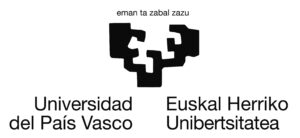Olas de calor y ciudades - Adaptación y Resiliencia del entorno construido (OLADAPT)
OLADAPT: Heat Waves and Cities - Adaptation and Resilience of the Built Environment Is a coordinated research project that aims to improve the adaptation of cities to heat waves, one of the most critical effects of climate change. This project responds to the urgent need to transform urban environments into more resilient, sustainable and livable spaces, considering not only constructive and climatic factors, but also social, economic and cultural ones. OLADAPT is structured in three subprojects that address the problem from different scales of intervention -building, city and digitalization- through the collaboration between research groups of the UPV/EHU, the UPM and the UEx. Its approach combines multi-criteria analysis tools, real-time monitoring technologies, digital simulation and urban and architectural design strategies to build a comprehensive methodology for assessing and responding to thermal risk in cities.



SUBPROJECT 1
Evaluation of the effectiveness of adaptation solutions to minimize the impact of heat waves: buildings and urban space.
Reference: PID2022-138284OB-C31
It focuses on evaluating the effectiveness of retrofit solutions both in buildings and in the urban space. Through the application of the MIVES methodology, constructive, energetic and thermal comfort aspects are analyzed, as well as the relationship between buildings and their immediate surroundings. This analysis allows the design of interventions such as envelope rehabilitation, green infrastructures or passive strategies that improve the response of urban spaces to extreme heat episodes.
Principal Coordinator
SUBPROJECT 2
Holistic heatwave risk assessment and urban adaptation strategies
Reference: PID2022-138284OB-C32
It focuses on the holistic assessment of heat wave risk at the urban scale. By integrating social, economic, environmental and construction variables, particularly vulnerable areas are identified and Homogeneous Urban Zones (HUZ) are defined according to their adaptive capacity. In addition, high-resolution climate maps are generated to locate critical points of heat exposure and to design more effective urban planning and regulatory strategies.
Principal Investigator
SUBPROJECT 3
Continuous monitoring for modeling, simulation and adaptation to heat waves
Reference: PID2022-138284OB-C33
Addresses the digitization and monitoring of the built environment using low-cost sensors connected by LoRaWAN. These devices collect real-time environmental data that are integrated into a digital urban twin. This model makes it possible to simulate urban climate behavior, visualize the effects of the measures applied and generate key indicators that facilitate decision-making by public administrations and agents in the construction sector.
Principal Investigator

